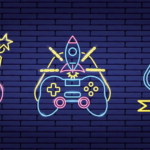
Movies and video games are one of the most popular types of entertainment and leisure in our time. It’s hard to believe, but 10-15 years ago, the passion for computer games was not considered normal and was more associated with children or infantile adults. Many people have a game console or a computer with their favorite video game at home. Claims that video games are art no longer cause ridicule and adverse reactions from people. Surprisingly, once upon a time, cinema also had to go through misunderstanding and rejection by the sophisticated public, proving its right to be called art. And what is even more surprising, in a sense, the “bad reputation” for both movies and video games has been entrenched after very similar periods: “fair movies” and “arcade machines.”
After all, if cinema’s basis is visual storytelling, then for games, it is the viewer’s interaction with the worlds that developers create.
In modern visual arts, different ways are used to convey the atmosphere of the work, to attach the viewer to the author’s intention, and to make him empathize. Musical accompaniment in video games primarily creates the gamer’s mood – tension, fear, the joy of victory; it also contributes to the player’s association with his avatar.
Previously, music in computer games was just a screensaver, a background, and nothing more. Now, this is a whole direction to which we have begun to pay more attention and criticize.
Human curiosity is one of the engines of progress. Not only in childhood but also throughout our lives, we are not left with the hope that the impossible is possible: if you reach out for a toy, a book, a music disc, a cassette with your favorite movie, you will immediately get out of boring everyday life into another reality. The 21st-century video games confirm the old idea that “gaming is serious.”
Game music is still young but has already managed to get beyond the audio files. Orchestras play it in pompous concert halls, recordings of symphonic arrangements of music from Final Fantasy top the iTunes charts, and game composers become rock stars.
And now, the unpretentious central theme of the game Super Mario Bros., written by Koji Kondo in 1985, sparkled with new colors. First, it was remixed, and rock bands, jazz musicians, and DJs performed it. Symphony orchestras played it. Then the musicians remembered other cult melodies – from Legend of Zelda and Castlevania – and included them in their playlists. Finally, they added modern motifs from The Elder Scrolls 5: Skyrim and League of Legends.
And people began to go to concert halls to listen to the music from the games performed by the orchestra. Not always in tailcoats and evening dresses – often in the costumes of your favorite heroes. This is how game music concerts appeared.
Enthusiastic players, as well as people who once created soundtracks for games, made a massive contribution to the development of such concerts. Music, which initially did not claim to be anything more than a background, received a second life in live performance, and its authors came out of the shadows. It turned out that there are a lot of people who want to hear melodies from their favorite games.
Musical Accompaniment – Justified Necessity
Good music sets you in the right mood, creates certain emotions, and cheers you up, which is why the listener remembers it – this is all its charm!
Music from games is a particular layer of musical culture worthy of close attention. Marches are illustrated in games of battle and peaceful life – soulful melodies. Modern games are accompanied by complex musical compositions that can be compared with unfolded symphonic canvases. An audio sequence from epic video games has a cult status and will forever remain in the memory of generations.
Music and sound effects can become memorable, allowing people to recognize and sing along or imitate the tune instantly. However, despite the popularity of video game music, people may not always know the composer’s name, which is an exciting difference between music in the gaming industry and other areas.

But in the world of music, there are also not just tracks of famous artists and musicians that you listen to when returning home from school or work. There is a specific direction in which many composers worldwide work – this is soundtracks. Currently, they are written not only for films but also for computer games, and people with a worldwide reputation are doing this: Jesper Kud, Lorne Balf, Hans Zimmer, and others. Players are in full control of the game’s pace, which responds to adaptive music. Adjustment of music is dynamically dependent on in-game events (like in movies).
Sound designers could have resorted to the most straightforward solution – fading out the melody, but that would have been too boring. The horizontal mixing of the track made it possible to switch tunes smoothly. The implementation is concise: the player did not notice the change in music.
The musical accompaniment of a video game is its integral part, almost equal to the visual side. Those developers and producers of video games who do not understand this are unlikely to be able to create a full-fledged work of art from it.





